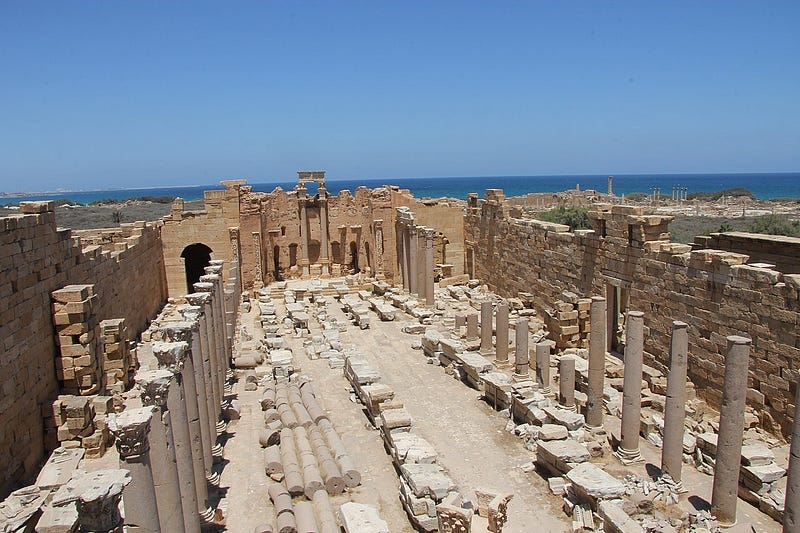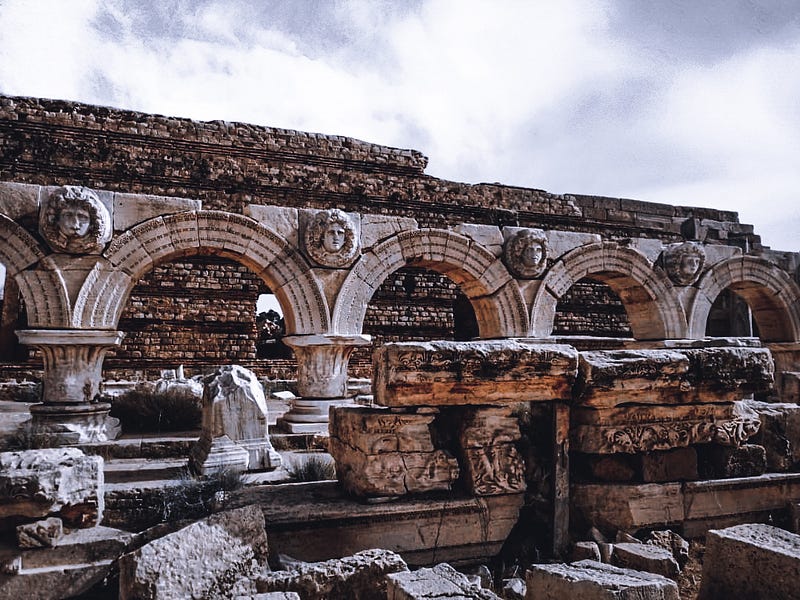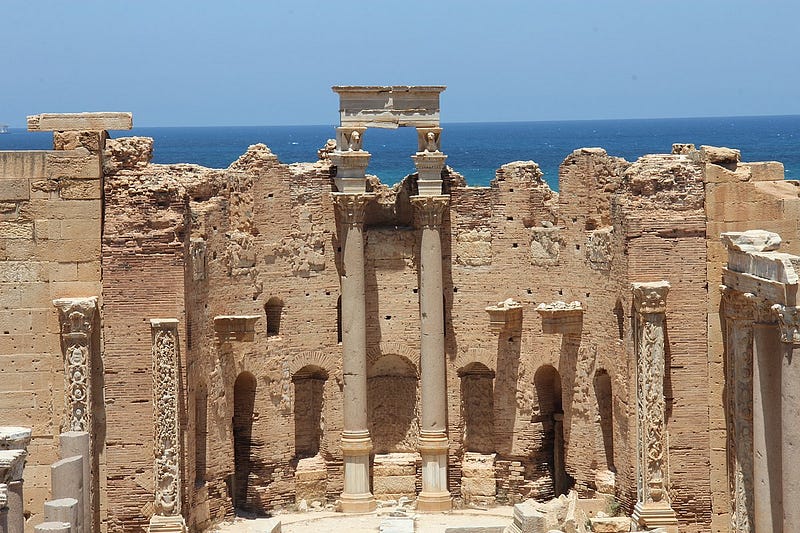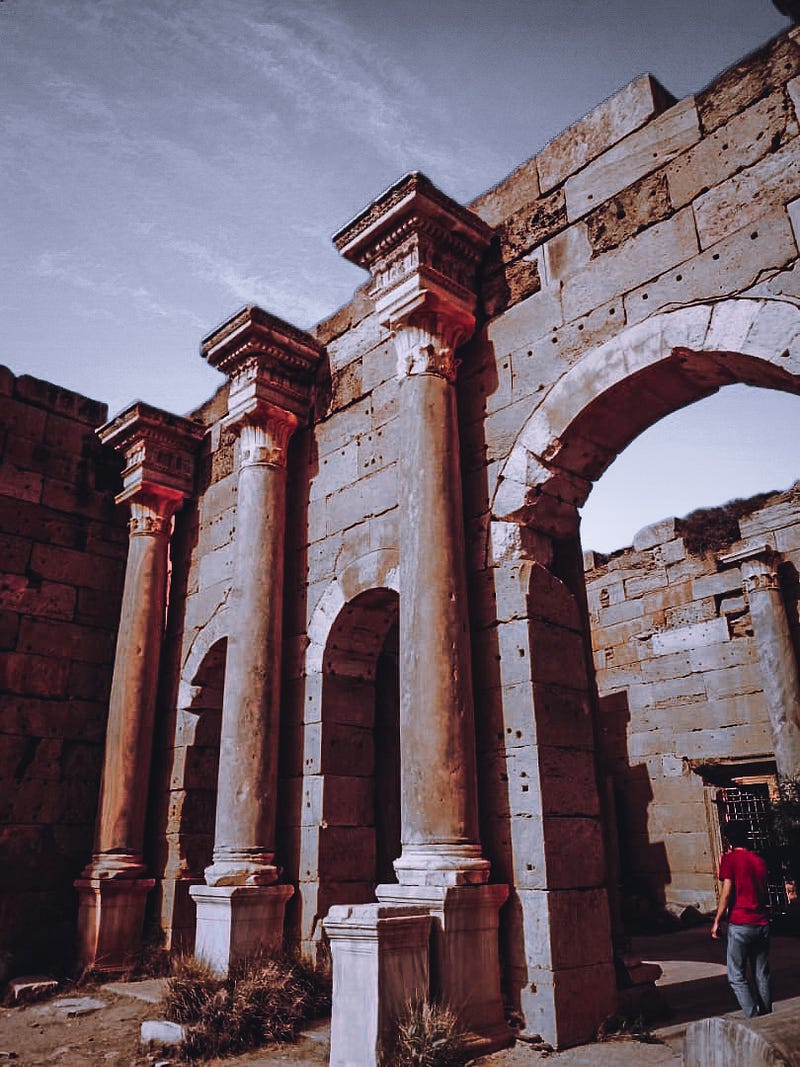Exploring Leptis Magna: A Journey Through Ancient Ruins
Written on
Chapter 1: The Marvel of Leptis Magna
Nestled along the Mediterranean coastline lies Leptis Magna, a site that was once a well-structured Roman metropolis. Today, it stands as a testament to its rich past, allowing visitors to envision the growth of this affluent city over two millennia ago.

What did this Roman city resemble at its peak? What architectural feats did its rulers construct to immortalize their reigns? What factors led to its decline, and did natural calamities play a role in its downfall? The narrative of Leptis Magna unfolds through these inquiries. Today, these ancient remnants attract numerous tourists and are located approximately 100 kilometers east of Tripoli, Libya.
Remarkably, Leptis Magna has endured for over 2,000 years, preserving a glimpse of what a thriving and significant city looked like in Roman times. At the height of its power, it ranked among Africa's top three cities, alongside Carthage and Alexandria. Currently, only about 40 percent of the site is exposed, with much still buried beneath the sands.
Section 1.1: The Founding of Leptis Magna
Leptis Magna was established by the Phoenicians around 600–700 BC, predating the reign of Emperor Augustus by several centuries. Along with Oea and Sabrata, it formed the tri-city of Tripoli. Initially under Carthaginian control, its development was spurred by its strategic port, which facilitated trade.
Following Rome's victory over Carthage in the Second Punic War, Leptis Magna maintained a degree of autonomy before gradually falling under Roman influence. The Romans sent settlers and a small garrison to protect them, leading to the city's prosperity. Remarkably, it even minted its own coins, which featured Punic inscriptions alongside depictions of Hercules and Dionysus.
By the mid-first century BC, Leptis Magna had transformed into a wealthy urban center. In 46 BC, it became part of the province of Africa Nova after Julius Caesar's conquests in Africa, before briefly being controlled by the king of Numidia.

Section 1.2: Architectural Wonders
Under Emperor Augustus, Leptis Magna underwent significant expansion, resulting in some of the oldest monuments that still stand today. An amphitheater was constructed in the first year AD, followed by the temple of Roma and Augustus a decade later. The market square built during this period is still visible.
As time passed, Leptis Magna became increasingly adorned with structures such as the Arch of Tiberius, the Arch of Trajan, and Hadrian's Thermae. The latter featured an advanced heating system known as the hypocaustum, which provided underfloor heating in baths and affluent homes. This innovative technology was so effective that it was utilized well into the Middle Ages.

Chapter 2: The Legacy of Septimius Severus
The peak of Leptis Magna's prosperity occurred during the late second and early third centuries AD, particularly under the reign of Emperor Septimius Severus, a native of the city. He invested in his hometown, commissioning the grand Septimius Severus Arch, rebuilding the port, and constructing a magnificent forum.
This period solidified Leptis Magna's status as the third most significant city in Africa. Following the emperor's death, the basilica was consecrated—now one of the city's most remarkable structures.
However, the city's fortune would soon wane. The surrounding regions began to depopulate, and a devastating earthquake in 365, measuring 8.5 on the Richter scale, struck the eastern Mediterranean. This was followed by a massive tsunami, leading to Leptis Magna's decline, exacerbated by the ineffective governance of Romanus.
In 439, the Vandals conquered Leptis Magna and destroyed its defensive walls to prevent any potential revolts. Although the walls were eventually reconstructed, they were significantly smaller. After subsequent invasions by the Byzantines and Berbers, the city fell to Arab control in 642, leading to its gradual deterioration. For many years, it remained buried under sand.

Section 2.1: Rediscovery of Leptis Magna
In present-day, the illustrious ruins of Leptis Magna are located on the outskirts of Al-Chums. Italian archaeologists took an interest in the site during the early 20th century, gradually unveiling its remnants even before World War II. They discovered an intriguing layer of history; beneath the Roman amphitheater lay a Punic cemetery, revealing artifacts like a fragment of Corinthian pottery dating back to around 500 BC.
In the 1980s, Leptis Magna was designated a UNESCO World Heritage Site, recognizing its historical significance and the need for preservation.
The city of Petra, known for its rock-carved architecture, continues to astonish with its hidden treasures, including a substantial object recently uncovered from the sands.
Thank you for reading this article! If you enjoyed it, feel free to show your appreciation with some claps or consider following me. Your support means a lot!